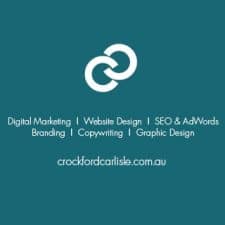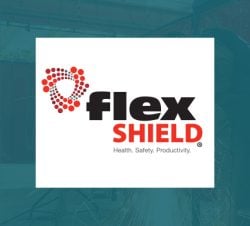Recently, I was fortunate to be selected to attend a “Sales Boot Camp”, under the leadership of Boston-based David Weinhaus, Manager of HubSpot’s Partner Sales Enablement.
I wanted to share some of my key takeaways with you in this article. I reckon some of these insights could help you and your sales team a great deal with your sales strategy and business development.
First, some background — how I came to be on the course
When we made the decision at Crockford Carlisle to become a HubSpot Partner agency, we had no idea what a transformation it would bring to our thinking about:
- The significant ROI that Inbound Marketing could bring to our clients, and
- The level of service we provide and how we provide it.
Looking back, we knew then that Marketing Automation was powerful. We knew that we wanted it for our clients. And we knew that HubSpot was the leading platform to get the job done.
What we DIDN’T yet know was that HubSpot has an amazingly strong commitment to providing support and training to agencies, both at a technical level and at a business growth level.
They know that if their partner agencies are good at what they do, they will grow — and HubSpot will grow with them.
Fast forward almost three years, and as a Gold Partner, I was fortunate enough to receive an invitation. I didn’t hesitate to enrol in the course.
Now with the boot camp complete, here are my key takeaways.
- You have to make THREE sales, not just one
One of the challenges in sales is to put yourself in the buyer’s shoes. Yes, I know we have all heard this many times. I’ve been preaching it myself for 30 years as a copywriter and marketer.
However, on the boot camp, David taught me to look at this in a slightly different way, and put a PROCESS into the thinking behind it.
It gave me a new understanding that I want to share with you.
He explained that you actually have to make three separate sales:
Sale #1 — Why change?
If your potential customer is going to use your services (read: spend money), there has to be a good reason for them to do so.
But before moving forward to discuss what you do, the first step is for both them and you to understand the “why”.
This means looking at the challenges they face, so they can be put into perspective. This helps both parties understand the flow-on problems that these challenges are causing.
Depending on your product or service and the type of solutions you provide, it may be:
- Lost opportunity
- Unnecessarily high costs
- Inefficiencies
- Compliance issues
- Loss of competitive advantage
...or any number of other problems and challenges that you could help them to fix.
Once the ‘why’ is firmly in mind, you and your potential customer can then move forward.
Next, you can discuss possible options to get the job done.
Sale #2 — Why your type of solution?
Once you have both figured out that there is a problem and that something needs to change to fix it, the next step is to dig in a little to identify that there is a potential fit with your type of solution.
Remember: it’s still far too early to talk about YOUR product/service. At this stage, it is just figuring out if there is generally a fit with what you do.
Your business will no doubt be different from my marketing agency. But I’ll talk about us an example just to help you to see how this could work for you.
Let’s say you came to us (hint: our phone number is at the top of the page) to get help with lead generation from your website. After we’d talked about your challenges and why you need help, the next thing we’d need to nut out is whether Inbound Marketing is really the solution you need.
I’m not talking here about Crockford Carlisle as a digital agency. It is too early for that discussion.
Rather, the conversation would be about the ‘big picture’ of Inbound Marketing, and where it might fit in with your goals, compared to another course of action such as hiring another salesperson or spending money on advertising or SEO.
At this stage in the discussion, we’d be talking about numbers. We’d be looking at things like:
- The average value of each sale you make
- The Lifetime Value of your customers
- How much traffic your site currently has
- How many leads/sales it currently produces, and
- What’s the quality of those leads, and whether they are profitable for you.
And so forth.
From this discussion, we can determine whether there is a likely fit, and whether you and we should pursue things further.
Sale #3 — Selling YOUR solution
Once you have:
- Established the “why” (Sale #1)
- Established that your type of solution is appropriate (Sale #2)
You can THEN progress to discussing your particular business/service/product, to show the value that you offer.
Speaking personally, the big takeaway for me was that I need to spend more time on the first two steps, and less on the third.
Because I am so passionate about the amazing things we can do with Marketing Automation to increase business for our clients, I repeatedly find myself rabbiting on about that – forgetting that it’s all just jibber-jabber if we haven’t sorted out those first two steps.
In fact, on the boot camp, we listened to some recorded role-plays. And embarrassingly, it was a clear illustration that I was talking 99% of the time about what we do, instead of listening and understanding the problem and what was needed to solve it.
Ouch!
- Be curious. And I mean genuinely curious.
My next takeaway was to ‘let go’, and not try and make a sale.
To explain…
If you are going to solve a problem for someone, you have to know what the problem is, right?
And yes, if you have been in sales for a while, you know the importance of a ‘Discovery’ session — where you ask questions to find out where the problems are.
So, nothing new in that.
But the insight I got in this training was to have the right attitude when you are asking questions. And the right attitude is to be completely relaxed about whether you make a sale or not.
Yes, I know, when you have sales targets to meet, that approach may seem to be at-odds with reality. But there is a lot of power in going about things this way.
As HubSpot’s David Weinhaus explained, “If you go into a sales discovery meeting with a bunch of questions that are designed to trap the person into admitting they have a problem that you can solve, it is going to feel pushy and ‘salesey’ – and it won’t work.”
He’s right. Absolutely right.
The key is to take a step back from trying to sell, and just be genuinely curious about your prospect and the challenges that they face.
Have a conversation. Not an interrogation!
For me personally, (and this may work for your sales team too), the key is to REALLY know your stuff, rather than relying on a bunch of ‘set questions’ that you want to get through.
I don’t mean ‘know your stuff’ in a smarty-pants way. I mean that you need to build your knowledge about:
- What you do AND
- The typical problems/challenges that your potential clients have.
That way you can talk about their challenges and problems in depth, rather than firing off ‘rote’ questions from a pre-prepared list. Doing that feels manipulative and ‘salesey’.
Thinking about this, when I started with HubSpot I found some information about sales discovery meetings, including some resources that detailed the questions you “should” ask.
Don’t get me wrong, they were good questions, and I did try to use them. But it somehow felt uncomfortable. It felt like I was trying to trap or manipulate. So I gave up on it.
But here’s the thing I’ve learned…
After the boot camp, I’m asking pretty much the same questions, but I’m Not-Going-Through-Them-One-At-A-Time-By-Rote.
Instead, I’ve learned to relax and just chat. And to do that with an attitude of ‘letting it go’ if things don’t add up. If their problems don’t match our solutions, then that’s OK. The sale was not meant to be.
- Don’t dance around your price
I don’t know about you, but I used to struggle with talking about the fees that we have to charge for our expertise.
As a digital marketing agency that does high level work, our solutions are not cheap. Our smallest monthly plan is around $5K, with custom packages at twice that — or more.
There are good reasons for this.
Our clients are serious about growth, and they don’t want a one-man-band. They want experienced, trained and knowledgeable experts, and a high level of service. In short, they want a partner in their growth.
Your business may be similar. You too may offer a high quality service that provides great value, and you have to charge accordingly to provide the resources and expertise to do the job.
If you do, then my advice after attending this boot camp is to be right up-front about your pricing. Bring it up EARLY in the sales discussion.
In the past, I didn’t do this. I was almost embarrassed about our prices, and mumbled something about it at some point — often in an apologetic voice.
But now I understand that you need to raise the subject of price early on.
Firstly, if your services are out of the range that someone was planning on, then it is better for both parties to find out early so the neither one wastes time.
Secondly, you need to show the VALUE that you bring. And to do that, you need to have the price on the table so that it can be compared to the benefit your potential customer will receive.
In our case, if a business owner is going to commit $5K or $7K a month to a digital marketing agency like Crockford Carlisle, that is a serious outlay of course. He needs to see a solid ROI. He also needs a strategic growth plan. It won’t work if he just wants to “grow the business” on a whim!
So we need to discuss pricing right up front, so that we can both dig in and see where the ROI might be — or might not be.
And really, when you think about it, this ties in with the previous point about being genuinely curious and being willing to let it go.
If you are up front about your pricing, and have an open, down-to-earth discussion with someone about their challenges (and the opportunity cost of those challenges), then you can work together to see whether your service at your pricing is a fit.
And if it isn’t, then be happy to let it go.
Where all this “sales stuff” fits in with your Inbound Marketing strategy
As you know, we don’t offer sales training at Crockford Carlisle. There are other experts out there who do that.
HOWEVER…
As your digital marketing agency, we work closely with your sales team to make sure that the ‘handover’ of your potential buyers from marketing to sales is a smooth process.
To explain:
We want to help you to be more profitable, and that means setting up your sales funnel so that your potential customers are QUALIFIED before they are ‘handed over’ to your sales team. (We call these an SQL — which is a Sales Qualified Lead)
I can’t stress enough the importance of having your marketing team and your sales team working together. It is a real force multiplier. It increases your efficiency and gives you a terrific competitive advantage.
And that, right there, is where all this ‘sales stuff’ fits in with your Inbound Marketing strategy. As a digital agency, we need to understand your sales team’s process, so we can put all the ducks in a row and make sure we are working with them to help you to grow.
So if you’d like to have a chat about your sales process, and how we can support your team with more Sales Qualified Leads, then I’d welcome your call on 07 3891 3800. To schedule a day and time that suits you, just use the calendar below to pick a slot.


















